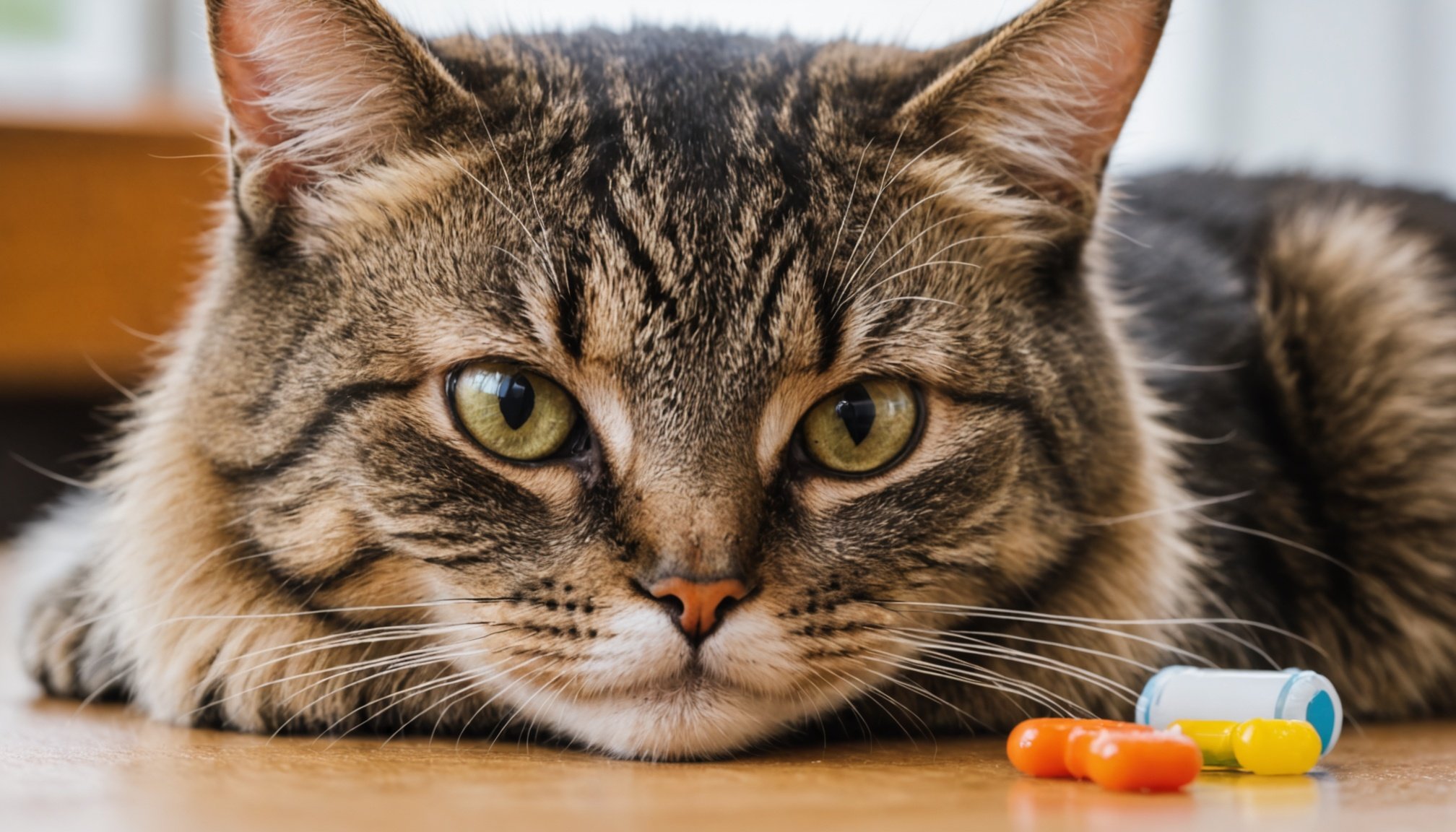As beloved companions, our cats rely on us for their health and well-being. One serious concern that cat owners may face is diabetes, a condition that can significantly affect a feline’s quality of life. Understanding the steps you can take to minimize the risk of your cat developing diabetes is crucial. With the right knowledge and proactive measures, you can help your furry friend maintain a healthy lifestyle and reduce the chances of this disease. In this article, we will explore the critical factors contributing to feline diabetes and practical strategies for prevention.
Understanding Feline Diabetes
To effectively reduce the risk of diabetes in cats, you must first understand what this condition entails. Diabetes mellitus in cats typically manifests in two forms: Type 1 and Type 2. Type 1 diabetes is rare in felines and occurs when the pancreas fails to produce sufficient insulin. On the other hand, Type 2 diabetes is more common and arises when the body becomes resistant to insulin or when the pancreas cannot produce enough of it in response to the body’s needs.
Additional reading : How can I safely transport my cat to the vet without causing them stress?
Several factors can contribute to the development of diabetes in cats. Firstly, obesity is a significant risk factor. Cats that are overweight are more likely to develop insulin resistance, which can lead to diabetes. Moreover, certain breeds, such as the Burmese or Siamese, may be predisposed to this condition.
Age is another crucial element; as cats get older, their risk of developing diabetes increases. Cats over the age of seven are more vulnerable, making regular veterinary check-ups critical for early detection. Additionally, hormonal imbalances, particularly those related to the thyroid or adrenal glands, can also play a role in the onset of diabetes.
This might interest you : How can I set up a cat-friendly garden that is safe and enjoyable for my feline friend?
Understanding these risk factors empowers you to take proactive steps in safeguarding your cat’s health.
Maintaining a Healthy Weight
One of the most effective strategies to prevent diabetes is by maintaining your cat’s healthy weight. Obesity is a leading cause of insulin resistance, making weight management a top priority. Start by consulting with your veterinarian to establish an appropriate weight target for your cat. They can provide a tailored feeding plan to help your cat lose weight gradually and healthily.
You should ensure that your cat receives the right amount of high-quality food. Look for cat food that is high in protein and low in carbohydrates, as cats are obligate carnivores and thrive on a meat-based diet. Avoid free-feeding, as this encourages overeating; instead, establish a structured feeding schedule that allows you to monitor their intake.
Incorporating play into your cat’s daily routine is essential. Engage them with interactive toys or play sessions that stimulate their hunting instincts. Aim for at least 20 to 30 minutes of active play each day. This not only helps in weight management but also strengthens your bond with your feline friend.
Remember, making gradual changes to your cat’s diet and lifestyle is key. Sudden changes can cause stress and may lead to other health issues. By promoting a healthy weight, you significantly reduce your cat’s chances of developing diabetes.
Promoting Regular Exercise
In conjunction with maintaining a healthy weight, regular exercise is crucial for your cat’s overall health and diabetes prevention. Cats are inherently playful and active creatures, and it’s vital to encourage this behavior. Providing ample opportunities for exercise can help maintain a healthy weight and improve insulin sensitivity.
You can promote exercise by introducing stimulating toys that encourage your cat to move. Laser pointers, feather wands, and balls can provoke your cat’s natural hunting instincts, making playtime both enjoyable and beneficial. Rotate toys frequently to keep their interest piqued.
Consider creating an enriched environment for your cat. Cat trees and shelves can provide climbing opportunities, and window perches can entice them to observe the outside world, keeping them mentally stimulated. Additionally, if your living space allows, consider leash training your cat for outdoor exploration, where they can enjoy a controlled adventure.
Fostering a routine that includes exercise not only helps with weight management but also reduces stress and anxiety levels in cats. A well-exercised cat is generally healthier, happier, and less prone to developing health issues, including diabetes. Make exercise a fun part of your cat’s daily life.
Regular Veterinary Check-Ups
Routine veterinary visits are paramount to your cat’s well-being. Regular check-ups allow your veterinarian to monitor your cat’s overall health and identify early signs of diabetes or other health concerns. Make it a priority to schedule wellness appointments at least once a year, or more frequently for older cats.
During these visits, your veterinarian will assess your cat’s weight, review their diet, and examine their physical condition. Blood tests can also be conducted to evaluate glucose levels and assess for any potential metabolic disorders. Early detection of diabetes can lead to more effective management strategies and improved outcomes.
It’s also an opportunity for you to discuss any concerns regarding your cat’s behavior or health. If you notice changes, such as increased thirst, frequent urination, or unexplained weight loss, inform your vet immediately. These could be early indicators of diabetes or other health issues that need attention.
In addition to routine checks, consider vaccinations and parasite prevention as part of your cat’s health plan. Keeping your cat healthy and free from other diseases can improve their immune response and overall health, reducing the risk of diabetes. A proactive approach by partnering with your veterinarian is essential for your cat’s long-term health.
Understanding Dietary Needs
Diet plays a critical role in managing your cat’s health and reducing the risk of diabetes. Understanding your cat’s dietary needs is foundational in ensuring they receive the nutrients necessary for optimal health. Cats require a balanced diet rich in proteins and fats, with minimal carbohydrates.
When selecting cat food, opt for high-quality brands that list meat as the primary ingredient. Look for foods specifically formulated for your cat’s life stage, whether they are a kitten, adult, or senior cat, as their nutritional needs vary significantly. Avoid feeding cats high-carb foods, such as grains and fillers, which can lead to weight gain and other health problems.
Additionally, consider the feeding style you adopt. Some cat owners prefer dry kibble for convenience; however, wet food can be beneficial due to its moisture content, which aids in hydration. Combining both types may be a good strategy to ensure your cat receives a varied diet. Always provide fresh water to ensure hydration and support kidney function.
Monitor your cat’s weight and adjust portions accordingly. Overfeeding, even healthy food, can contribute to obesity and increase the risk of diabetes. By being mindful of your cat’s dietary needs and making informed choices, you can play a pivotal role in preventing diabetes and promoting long-term wellness.
Reducing the risk of diabetes in your cat is a proactive journey that encompasses multiple aspects of care. From understanding the condition and maintaining a healthy weight to promoting regular exercise and ensuring proper veterinary care, each step contributes to your cat’s overall health. By being vigilant about their diet and lifestyle, you empower yourself to make informed decisions that can lead to a longer, healthier life for your feline friend. Remember, your cat depends on you for their health; taking these steps can make a significant difference. Your companionship is vital, and together, you can enjoy many fulfilling years.










